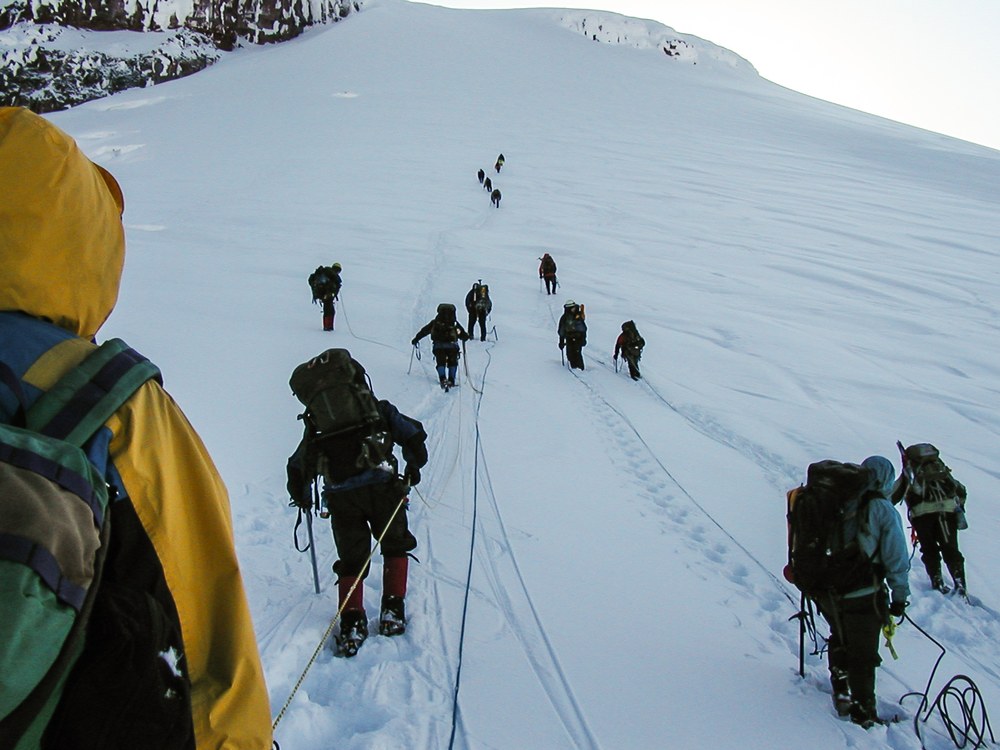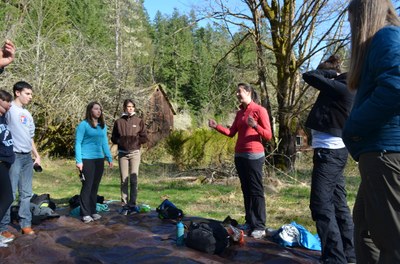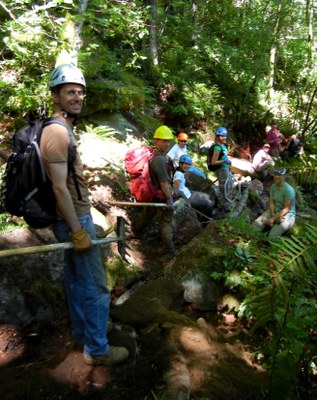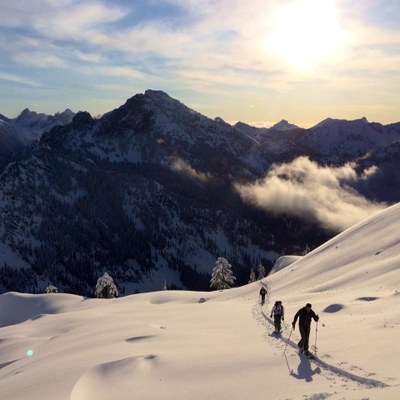
The Outdoor Access Working Group (OAWG) believes that people should be able to responsibly appreciate and experience America’s National Forests. For many people, organized trips are the ticket to outdoor recreation. Therefore, the organizations that lead these trips are crucial leaders in terms of outdoor recreation.
Unfortunately, the current permitting system for organized group access to our National Forests restricts many people from responsibly accessing the outdoors. These issues affect a broad spectrum of organizations, from outfitter guides, outdoor education, non-profits, and are often even difficult for land managers.
The OAWG was formed to address these issues. The OAWG would like to see a permitting process that works for everyone. This would mean a system that incorporates the interests of the outdoor organizations and land managers, while still considering the environmental impact of organization outdoor recreation on Forest Service lands.
Outdoor Recreation - Then and Now
Outdoor recreation has grown in ways that the Forest Service’s original mandate does not necessarily incorporate. The overwhelming benefits of outdoor recreation range from health benefits to learning leadership skills and forming connections to our national world that ultimately lead people to care for our public lands. These benefits are not completely recognized within current structures of the Forest Service's original mandate.
The current system for managing outdoor recreation access categorizes human powered recreation the same as timber, mining, and other “commercial” uses. Low impact recreation is firmly established within the guided recreation community. However, organized recreation is still treated as an impact to public lands instead of a way to connect people to the places that need their support the most.

Issues Identified
The OAWG has identified the following issues with the outdoor access permitting system:
Unknown permit availability and application instructions
Are permits available and how do I apply? This is a surprisingly difficult question to answer. Websites for each Forest often have limited information on how to apply and finding out about deadlines, associated fees, and permit availability is proven to be challenging.
The application process for permits varies drastically from one National Forest to the other. Different forests are also in different stages of issuing new permits, which is difficult for outdoor recreation organizations that operate in multiple forests, as they might have permits to operate in one Forest, but not for a neighboring Forest.
It is difficult for small companies and organizations to figure out where to start with the permitting process. Many organizations do not have the staff and organizational capacity to research, make phone calls, and establish necessary connections to apply for and administer permits.
Ineffective Analyses for Permit Approval
In order for a forest to be able to issue new permits, three types of analyses must be completed: a needs assessment, carrying capacity, and environmental analysis. These processes take significant amounts of time and resources to complete. With National Forest Service budgets continually shrinking there aren't enough resources to give any real priority to this process. This is a huge road block for organizations and companies who want to lead trips on forests that are not issuing new permits.
Deciding how much recreational use a forest can handle is at times subjective and unclear, which makes it very difficult for outdoor organizations to predict if they will receive a permit. In this article, David Cole and Thomas Carlson note that the methods for determining carrying capacity are not entirely agreed upon.
While the environmental impact of organized groups on Forest lands is important, finding ways to address impacts while also responsibly allowing access would be beneficial for organizations, businesses, and the public. Facilitating group access to our National Forests also helps grow local areas’ recreation economies.

Inefficient use of staff resources by both permitting agencies and outdoor organizations
Finding out how to apply and complete a permit is an extremely cumbersome task. Even for organizations that have conquered the task of getting a permit must spend hours every year on administering permits. Many outdoor organizations have staff solely for permit administration.
Land managers, who administer permits, are also faced with complex, time consuming processes on their end, to oversee permit implementation.
The time, staff, and resources used on applying and administering permits could be used in more effective ways that would still support our National Forests. As an organization with a long-standing partnerships with our National Forests, The Mountaineers would much rather put staff time towards partnering with land managers on activities volunteer trail work days to improve capacity towards the stewardship of these lands. Undoubtedly, a sufficient amount of time and energy should be used on regulating group access, but much of the processes in permit approval are inefficient.
Unable to adapt to new practices
If a permit holding organization wants to introduce a new use, such as a whitewater rafting company wanting to introduce standup paddle boarding, they are often times unable to do so because of permit restrictions. Human-powered sports are only increasing in popularity, and being able to provide recreationists opportunities to get outdoors on our public lands is ever-more important.
With global warming altering National Forests’ landscapes, the ability to adapt to new uses is crucial for outdoor recreation and engaging the public in the outdoors. Resources for the Future explain how outdoor recreation could change due to global warming in this article.
Inconsistent and excessive insurance requirements
It is required for outdoor recreation organizations to have various types of insurance in order to obtain permits for National Forests. Some outdoor organizations and universities are unable to afford or qualify for often-times lofty insurance requirements. In addition, not all National Forests allow adequate protection to outdoor organizations. Other difficulties concerning insurance requirements include:
- The amount of insurance outdoor organizations are required to carry can vary between National Forests.
- Insurance minimums are not clear and subject to increases.
- Public universities are unable to indemnify federal agencies such as the National Forest Service because universities are government entities.
What’s Next for the OAWG?

In less than a year, the OAWG has:
- Brought together a coalition of diverse organizations and businesses to address outdoor recreation permitting processes on our public lands.
- Identified primary issues with the National Forest permitting process.
- Released the OAWG - Access White Paper, a document that explains the permitting issues and OAWG's stance on them.
- Made the outdoor permitting issue a salient concern for the Forest Service and lawmakers.
In April, the OAWG met with the central office of National Forest Service in Washington D.C. to discuss the problems with the outdoor recreation permitting system. During the meeting, issues were recognized and potential solutions were presented. You can read more about the proposed solutions and what happened at the meeting here.
 The Mountaineers
The Mountaineers